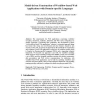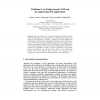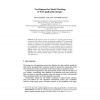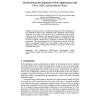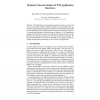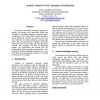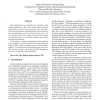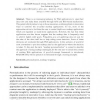ICWE
2007
Springer
14 years 5 months ago
2007
Springer
Abstract. Rich Internet applications (RIAs) enable novel usage scenarios by overcoming the traditional paradigms of Web interaction. Conventional Web applications can be seen as re...
ICWE
2007
Springer
14 years 5 months ago
2007
Springer
The requirements for Web applications concerning workflow execution, interaction, aesthetics, federation and Web service integration are steadily increasing. Considering their comp...
ICWE
2007
Springer
14 years 5 months ago
2007
Springer
: The goal of this work is to present the software WebRatio 5, which is a good representative of a new generation of CASE tools for model-driven design of Web applications. WebRati...
ICWE
2007
Springer
14 years 5 months ago
2007
Springer
: In this work we report our experience in applying model checking techniques to the analysis of static and dynamic properties of Web application models. We propose a mix of tools ...
ICWE
2007
Springer
14 years 5 months ago
2007
Springer
This paper presents a model-driven approach to the development of web applications based on the Ubiquitous Web Application (UWA) design framework, the Model-View-Controller (MVC) a...
FASE
2007
Springer
14 years 5 months ago
2007
Springer
Web applications are increasingly prominent in society, serving a wide variety of user needs. Engineers seeking to enhance, test, and maintain these applications and third-party pr...
CEEMAS
2007
Springer
14 years 5 months ago
2007
Springer
The construction of web applications is a complex task as different kinds of technologies need to be integrated. To ease the task of developing web applications many different we...
HASE
2007
IEEE
14 years 5 months ago
2007
IEEE
In this paper, an analytic technique is proposed to improve the dynamic web application quality and reliability. The technique integrates orthogonal defect classification (ODC), a...
AINA
2007
IEEE
14 years 5 months ago
2007
IEEE
Web applications are generally less interactive than desktop applications. Due to the simple request-response model between web browsers and web servers, users usually experience ...
WISE
2007
Springer
14 years 5 months ago
2007
Springer
There is an increasing tendency for Web applications to open their data silos and make them available through APIs and RSS-based mechanisms. This permits third parties to tap on th...

